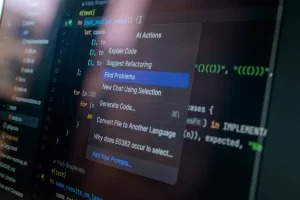The Speedy Evolution of AI-Driven Robotics

Imagine robots learning to walk like humans in just two days. The rapid progress of AI in robotics is nothing short of remarkable. These intelligent machines are evolving quickly, bringing about jaw-dropping innovations.
AI experts are pushing boundaries to make humanoid robots perform human actions better and faster, transforming the landscape of robotic capabilities. Get ready to witness how technology is reshaping the future of robotics with amazing speed.
Understanding Unitary G1’s Advancements
The Unitary G1 humanoid agent successfully achieved a human-like gait, reflecting impressive technological strides. This evolution marks a significant milestone in robotics. The robot’s previous capabilities have expanded remarkably, showcasing the engineering team’s dedication. This kind of advancement demonstrates the potential of AI when paired with relentless innovation.
Energy Efficiency and Flexibility Concerns
Critics argue about the energy efficiency and flexibility of AI-powered humanoids. However, the speed of advancements cannot be overlooked. Achieving a human-like gait was a formidable challenge for many companies. Yet, swift progress in robotics continues to exceed expectations.
Despite concerns, these robots are advancing rapidly. Their capabilities grow swiftly. The human-like walking style signals a shift in AI efficiency. It’s a stride towards more advanced and adaptable robotic movements.
Virtual to Physical: The Journey of Robot Dogs
AI-driven robot dogs excel in simulated environments, learning complex tasks quickly. These dogs exhibit remarkable physical tricks. Balancing on two legs and maintaining stability when challenged.
As these robots transition from virtual to physical spaces, their learning potential expands. Their tricks and abilities captivate onlookers. The future will likely see these robots performing even more extraordinary feats.
With countless hours of virtual training, these robots emerge capable in real-world scenarios. Their progress highlights the potent mix of virtual simulations and real-life applications, promising thrilling developments ahead.
The Figure Robot’s Dynamic Stability
The figure robot showcases groundbreaking stability. Its ability to absorb pushes and shoves highlights its potential in human environments. This capability is crucial for its functionality in crowded places.
Robots are often delicate and costly, making stability a top priority for developers. A robot capable of withstanding physical pressure is invaluable in dynamic, crowded settings. The figure robot’s stability could redefine robotic usability.
While costly, these advancements promise future savings. Stable robots can operate safely in human environments, reducing expensive accidents. Dynamic stability is a game-changer in robotic integration into daily life.
AGI’s Future and Public Perception
AGI’s arrival may surprise fewer people than expected. Its subtle integration might go unnoticed by the general public. Experts predict rapid development will bring dynamic changes.
Chollet suggests AGI will disrupt norms within 5 to 10 years. Its subtle yet powerful emergence could change perceptions of intelligence. Everyday tasks may see AI involvement, showcasing unseen progress.
Current AI benchmarks continue to improve steadily. Each advancement brings us nearer to AGI, suggesting significant future surprises. The progress promises extraordinary developments in intelligence recognition.
OpenAI’s Speed and Future Predictions
The pace of AI advancement is accelerating. OpenAI models progress faster than predicted. Innovations like O1 and O2 promise breakthroughs.
Sam Altman’s predictions for 2025 suggest AI will surpass all benchmarks. This unexpected speed signals robust developments and potential. The intelligence leap signifies a shift in understanding AI capabilities.
The transition from GPT-1 to GPT-40 in a short time amazed experts. AI’s rapid evolution reflects its boundless possibilities. OpenAI’s ongoing projects hint at even greater advancements.
Claude’s PDF Capabilities and Superior Graphics
Claude’s new PDF feature elevates document interaction. By examining images with text, it surpasses previous AI document readings.
This improvement offers clearer document analysis, valuable for long documents. The visual enhancement marks progress in AI’s understanding of complex data. The feature is a boon for graphic designers, improving their workflow effortlessly.
Runway’s Advanced Camera Controls
Runway introduced advanced camera controls, boosting creative possibilities. This feature allows omnidirectional movement for enhanced video projects. It offers unparalleled creativity and freedom to video artists and creators.
The rapid advancement in AI robotics is reshaping future possibilities. With each breakthrough, robotics becomes ever more integrated into everyday life. The evolving landscape presents thrilling opportunities for innovation.








